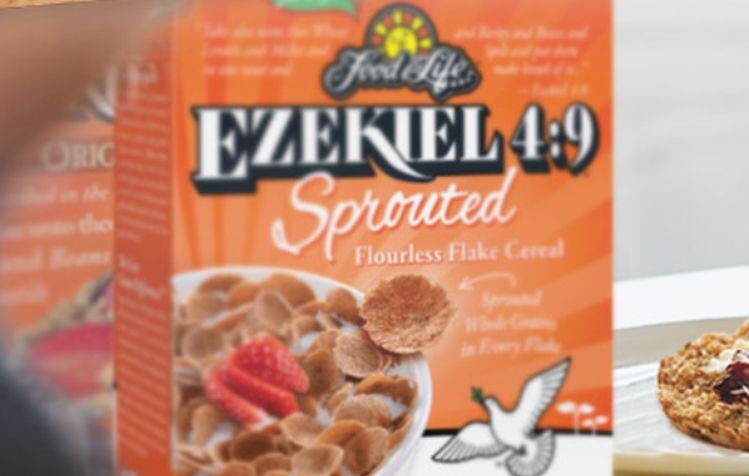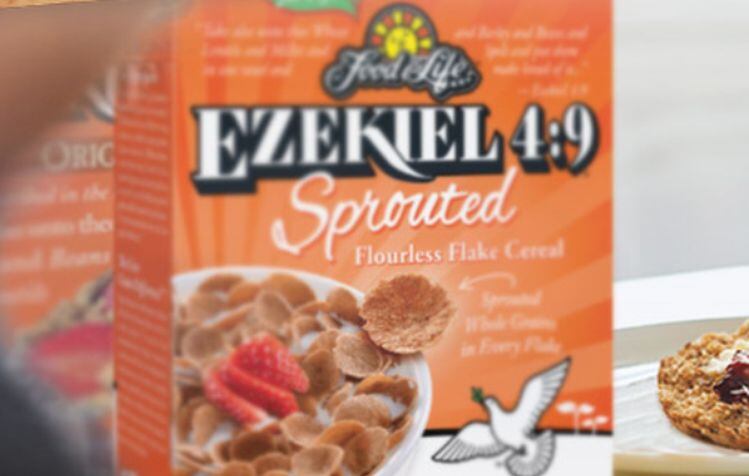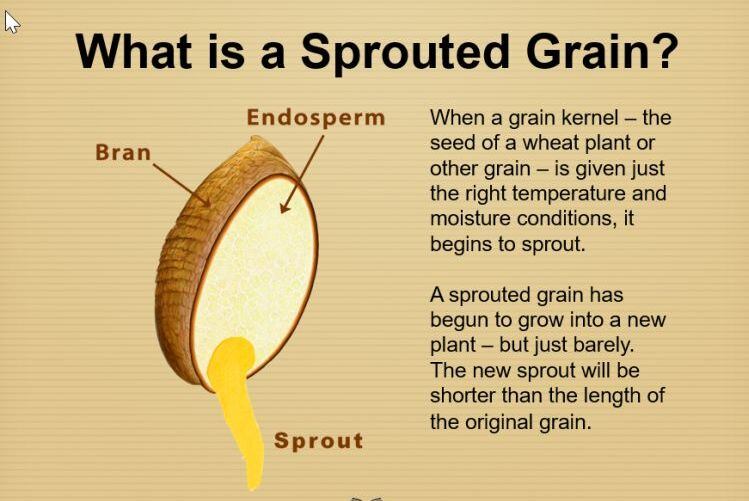Sprouted grains have been allowed to germinate (sprout) in a controlled manner by exposing them to moisture and warmth, which activates enzymes that eliminate or reduce components such as phytic acid that lock in nutrients, increasing the bioavailability of vitamins, minerals and other healthful components. This process is then typically halted by drying the grains.
However, there is no regulated definition of ‘sprouted grains’ and no agreed protocols over temperatures, when the germination process should be halted, or what label claims (which nutrients are increased, by how much?) firms can make, according to a review (in the journal Comprehensive Reviews in Food Science and Food Safety).
Speaking to FoodNavigator-USA after we reported on a lawsuit querying claims on Ezekiel 4:9 sprouted grains cereal labels, co-author Jan Delcour, PhD, professor of food science at Catholic University of Leuven in Flanders, Belgium, said the review highlighted the challenges facing food marketers that want to talk about sprouted grains without attracting the attention of plaintiff’s attorneys.
He told FoodNavigator-USA: “If one would consider standardizing the sprouting period and the temperature, then there would still be variability in the outcome which not only would depend on the cereal (e.g. spring wheat vs. winter wheat and cultivars thereof) but also on other variables such as the conditions of steeping (conversion of the dry cereal into a steeped one).”
Do the compositional changes confer health benefits?
Asked about health benefits, he said, “While nutrient compositional changes resulting from sprouting are often associated with health benefits, supportive data from clinical studies are very scarce. It follows that at present it is impossible to draw any conclusion on health benefits of sprouted cereals. We are not saying that there are no benefits, we are just saying that the supportive data are lacking today.”
He added: “Let’s say that an in vitro [ie. in the lab] detectable difference is found between the bio-availability of iron as a result of sprouting; it still needs to be proven that this is of relevance in vivo [ie. in animals or humans].”
Longer sprouting times might be good for nutrients, but there's a downside
One challenge for formulators, he said, is that the longer the sprouting time, typically, the more changes occur, which is a good thing. But there are also downsides.
For a start, he said, this increases costs, in part due to the loss of dry matter. But other challenges are that the longer the sprouting process, the greater the synthesis of the enzyme alpha amylase, which breaks down starch, which is needed for crumb structure in baking.
“Sprouted nutrient‐dense grains are deleterious for bread making. Including flour from sprouted wheat in a bread recipe negatively affects its end‐quality due to excessive peptidase and α‐amylase actions during dough making, leading to a loss of structure and sticky and wet crumb with large holes, respectively. The food industry tackles these shortcomings by using short sprouting times and/or by blending flour from sprouted wheat with its regular counterpart to obtain good end‐products. Unfortunately, these strategies substantially compromise the cereal nutrient content and potential health‐beneficial effects of the sprouted grains.
“Innovative strategies need to be developed to inactivate hydrolyzing enzymes in sprouted grains before or during product making, and their functionality in a wide range of staple foods such as bread, pasta, noodles, and breakfast flakes need to be explored.”
Similarly, longer sprouting times can increase the level of undesirable flavors and odors due to increased lipase and lipoxygenase action leading to aldehydes, free phenolic compounds, heterocyclic substances, and dimethyl sulfide, which can impart rancid, fatty, cabbage‐like, and beany flavors to products, said the review.
Gluten breakdown has a downside
Likewise, sprouting can break down gluten proteins in wheat such that they cannot form a viscoelastic network critical to creating a nice structure in bread, said the review. "Too low batter and dough viscosities result in poor‐quality attributes of wheat‐based products."
"Breads from recipes containing sprouted wheat are in general appreciated by the consumer due to their 50% higher total sugar content, giving them a pleasant sweet note. However, the additional nutritional benefits of these types of products are low since sprouting times of at least three days are needed to increase the nutritional value of wheat."
Starch
Sprouted cereals are “generally better digestible because of their enzymatically damaged starch granules, thin cell walls, and higher content of readily available sugars,” said the review.
Protein
“The relative differences in protein content between sprouted and non-sprouted cereals have been reported to be smaller than 10%, indicating that, in general, sprouting does not substantially affect total protein content,” said the review.
“Protein solubility and digestibility is higher as a result of sprouting,” it added, with the biggest effects noticed in barley, sorghum and millet. However, Swieca et al. 2015 did not observe any changes in protein digestibility when sprouting wheat for four days at 20 to 25 °C.
Gluten
While enzymes synthesized during sprouting can break down gluten, this takes a long time, and doesn’t degrade the protein sufficiently that celiacs can safely consume sprouted wheat, said the review.
Lipids
Sprouting breaks sown fats in some grains, with higher temperatures during sprouting increasing the impact, said the review. However, this can cause off tastes.
Dietary fiber
The soluble dietary fiber content increases 3‐ to 4‐fold as a result of sprouting, while the insoluble dietary fiber content decreases, especially when long sprouting times are applied (5 to 7 days).
Minerals
Sprouting increases the bioaccessibility of mineral elements, but these can be lost due to leaching during steeping, said the review. “To limit the loss of minerals, it is advisable to use moderate steeping temperatures (15 to 20 °C) and to retain the shoots and rootlets.”
Vitamins
“Short steeping times, using a limited amount of water, followed by long sprouting times, mild drying, and retaining rootlets and acrospires are most favorable to obtain an elevated vitamin content in sprouted grains.”
Polyphenols
A 1.2‐ to 3.6‐fold increase in total polyphenol content has been measured in wheat, barley, sorghum, rye, oats, and brown rice, when sprouted for 2 to 6 days at 15-28°C.
US retail sales of products referencing sprouted grains on pack decreased slightly (-2.1%) to $267.2m in the 52 weeks to October 7, 2018, according to data** from SPINS, with the largest category - bread and baked goods - experiencing a 4.2% decline. However, there were pockets of growth in shelf-stable bars and gels (+25.5%), crackers and crispbreads (+14%), frozen entrees (+343%) and shelf-stable hot cereals (+57%).
**SPINS natural, specialty gourmet, and MULO (multi-outlet data, powered by IRI) for the 52 weeks to October 7, 2018 (dollar sales).
Impact of Cereal Seed Sprouting on Its Nutritional and Technological Properties: A Critical Review. Dec 12, 2018
Authors: Elien Lemmens Alice V. Moroni Jennifer Pagand Pieter Heirbaut Anneli Ritala Yann Karlen Kim‐Anne Lê Hetty C. Van den Broeck Fred J.P.H. Brouns Niels De Brier Jan A. Delcour
Tortillas: Dough produced from sprouted wheat flour readily expands during extrusion resulting in puffy tortillas, which are valued by consumers, said the review.
"Tortillas from sprouted wholemeal have a less grainy texture, bitterness, and better opacity scores than their counterparts from non-sprouted wheat wholemeal."



